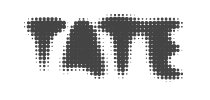Focusing on his British period (1940 to his death in 1948), this is the first major exhibition to look at the late work of Kurt Schwitters, a major artist of European Modernism. At Tate Britain, ends 12 May 2013.

Cotton wool has equal rights with paint
“The word Merz denotes essentially the combination of all conceivable materials for artistic purposes, and technically the principle of equal evaluation of the individual materials…A perambulator wheel, wire-netting, string and cotton wool are factors having equal rights with paint.”
– Kurt Schwitters, 1919
It is easy to see walking around this exhibition what Schwitters means as his work is meant to “…challenge traditional boundaries that separate painting and sculpture.” (from exhibition guide, Room 5). One might immediately think “paper and glue” when thinking of collage, Schwitter’s collages include elements such as toys, wooden objects, pieces of metal and hair. Even with such depth, his work takes on a painterly aspect, up close as well as from five feet away. His paintings, too, take on the depth of the collage pieces as they remain in two dimensions.

As I walked around the exhibition of Schwitters’ collages, paintings and “hand-sized sculptures”, I began to see confirmation of my tutor’s assertion that Schwitters had a lasting influence on today’s artists and even filmmakers and other types of art – from the excessive detail of Stanley Kubrick’s films to Christopher Marclay’s “film collages” to sound artists such as Susan Phillipsz. I only learnt on Friday [26 April 2013] that Schwitters recorded “sound art” in 1944, a piece called Ursonate – I thought “sound art” as such was fairly new to the art scene.

Another compelling work, “Hitler Gang” (1944), made from discarded paper and bits of wicker, reflects the time and environment and offers a somewhat subtle reference to the politics of the time as well. It’s a bit unusual, too, as his work mostly stayed away from political comment.

I loved the bizarre little “hand-held sculptures” in Room 5. Made of plaster or wood, and often painted bright colours, each one measures mere inches tall. It was easy to imagine them realised as much larger objects, perhaps featured in a nearby park. ‘The Dancer’ was one of my favourites – although the object is solid and still, it is easy to see the movement and play of shadows such as a living dancer might create.

More information
- Schwitters in Britain – exhibition at Tate Britain
- Kurt Schwitters artist information at Tate
- Review by Andrew Graham-Dixon in the Telegraph (4/5 stars)
“Never mind that Schwitters in Britain ends, anticlimactically, with a pair of well-meaning but superfluous installations in which two living artists, Laure Prouvost and Adam Chodzko, pay homage to his memory. This is a memorably quirky, poignant curiosity of an exhibition: a tragicomedy in object form.”
- Image gallery and preview in TimeOut magazine by Ossian Ward
“How did a German émigré Dadaist, poet and avant-garde collagist end up freezing to death in the Lake District?”
- Review by Brian Sewell of the Evening Standard
“…it is not at all difficult to push about within a frame the bits and pieces of the junk-yard and the wastepaper basket until they resolve themselves into satisfactory compositions; but I must argue that however absurd the behaviour, the theories and the baby-babble of this citizen idiot, in achieving his aesthetic apotheosis of rubbish, there is in Schwitters’ collages… the inescapable integrity of the perfect fool.” - Mark Brown’s review in The Guardian
“The show aims to explode a few myths about Schwitters…that he was an isolated genius…but he was actually a very sociable character… he put huge efforts trying to make connections in Britain.”
Exhibition details: Schwitters in Britain at Tate Britain runs from 30th January 2012 through 12th May 2013, fee entrance.


